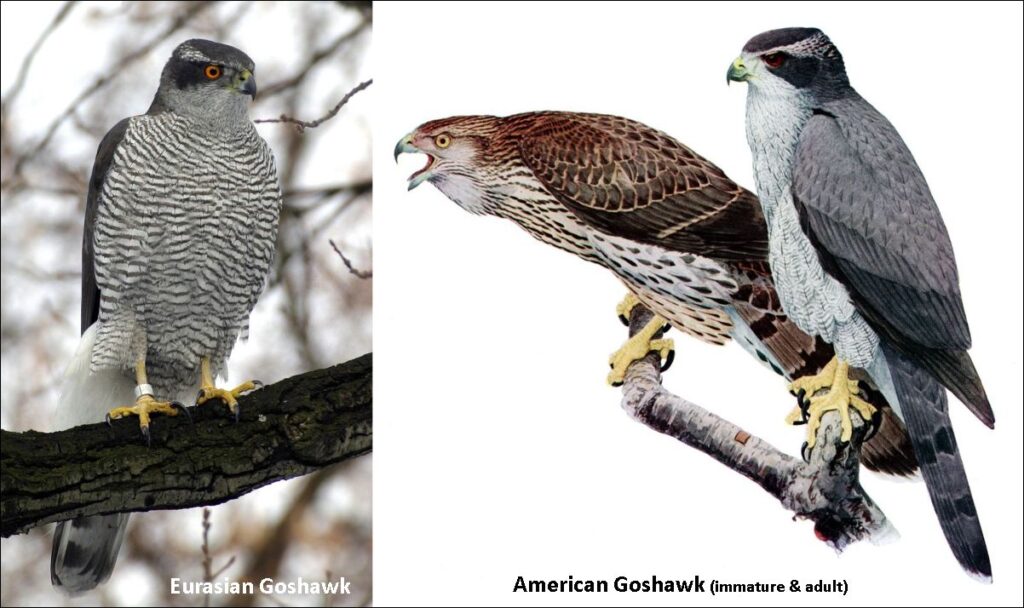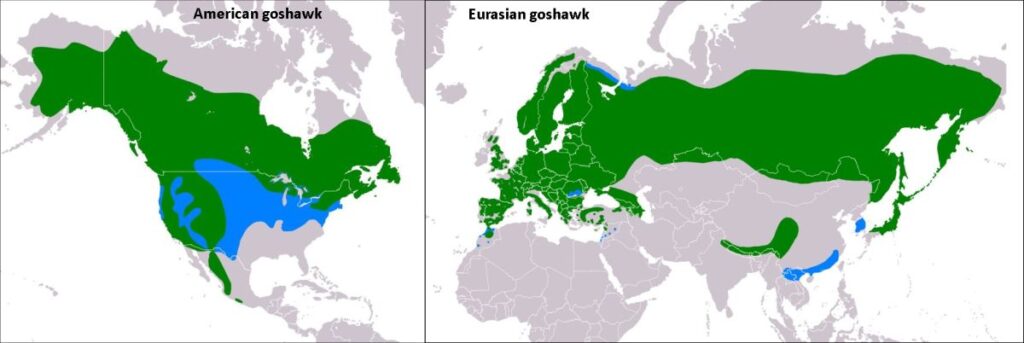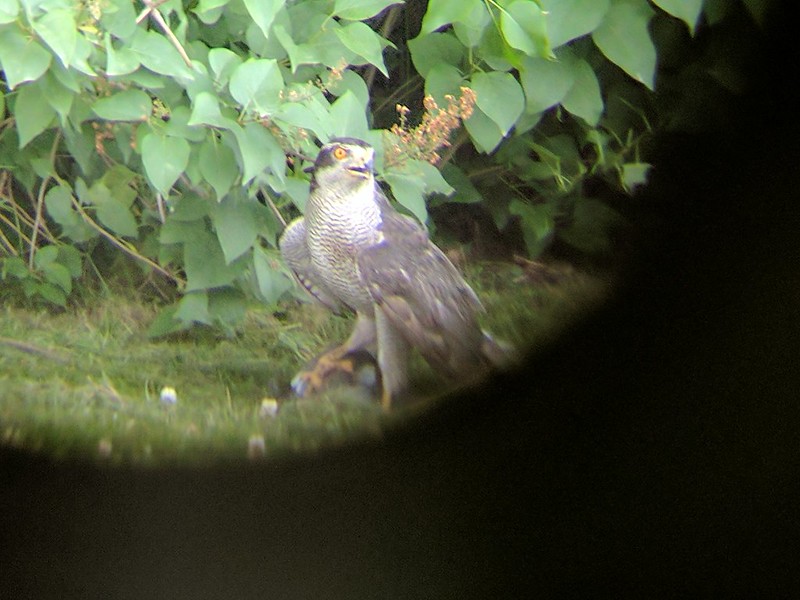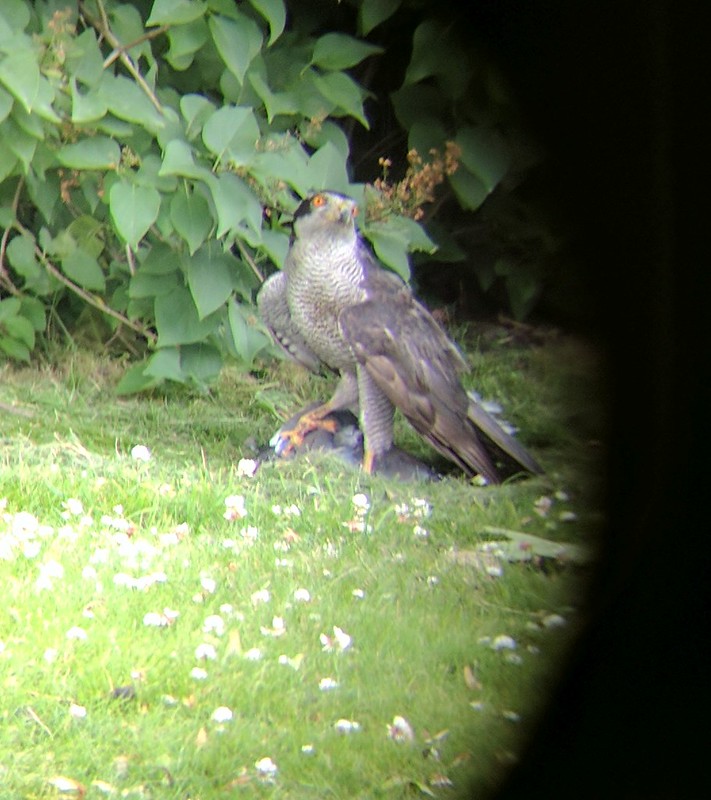
17 December 2023
In case you missed it, the “northern goshawk” disappeared last summer. After only 66 years as a single species, the American Ornithological Union (AOU) split the northern goshawk back into its former status as two: the Eurasian goshawk (Accipiter gentilis) and the American goshawk (Accipiter atricapillus).
They basically look alike. The split was based on DNA and vocal evidence but you won’t note these things in the field and you won’t need to. The ranges do not overlap. This is the classic case of “Where did you see the bird?” In North America? Then “American.” In Eurasia? Then “Eurasian.”

Because I had seen a goshawk in Helsinki, Finland on 6 July 2017, I gained an additional Life Bird by the split. (See my lousy photos taken through binoculars below.)
At the time I marveled that this bird had orange-ish eyes. North American juveniles have yellow eyes (see illustration above) while adults have red eyes. Did the orange eyes mean this Helsinki bird was immature? A Finnish bird guide told me “No. In Finland the adults have orange-colored eyes, not red.”


The eye color difference is noted in Wikipedia and Birds of the World as well.
Eurasian goshawk:
In Europe and Asia, juveniles have pale-yellow eyes [until 3 or 4 years of age] while adults typically develop orange-colored eyes, though some may have only brighter yellow or occasionally ochre or brownish eye color.
— Wikipedia: Eurasian goshawk
American goshawk:
Typical adult American goshawk (A. atricapillus) shows strong supercilium, red eyes, black head, and blue-gray back.
— Wikipedia: American goshawk
Since their eye color changes slowly, perhaps more slowly than their plumage, it may be unreliable to use the color as a diagnostic difference between the two species. However, as a North American birder familiar with goshawks, those orange eyes in Finland made a difference for me.
what a striking looking bird